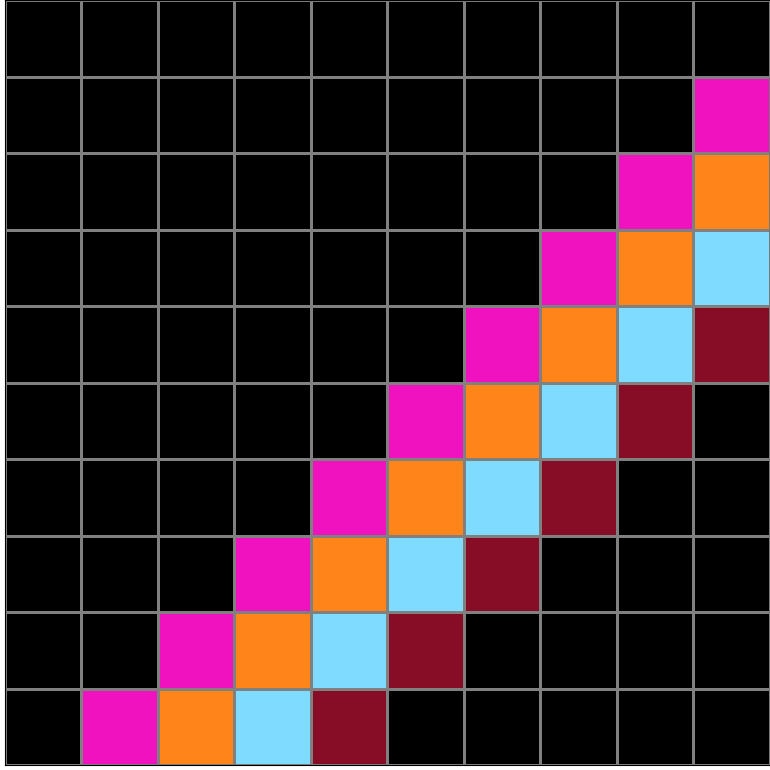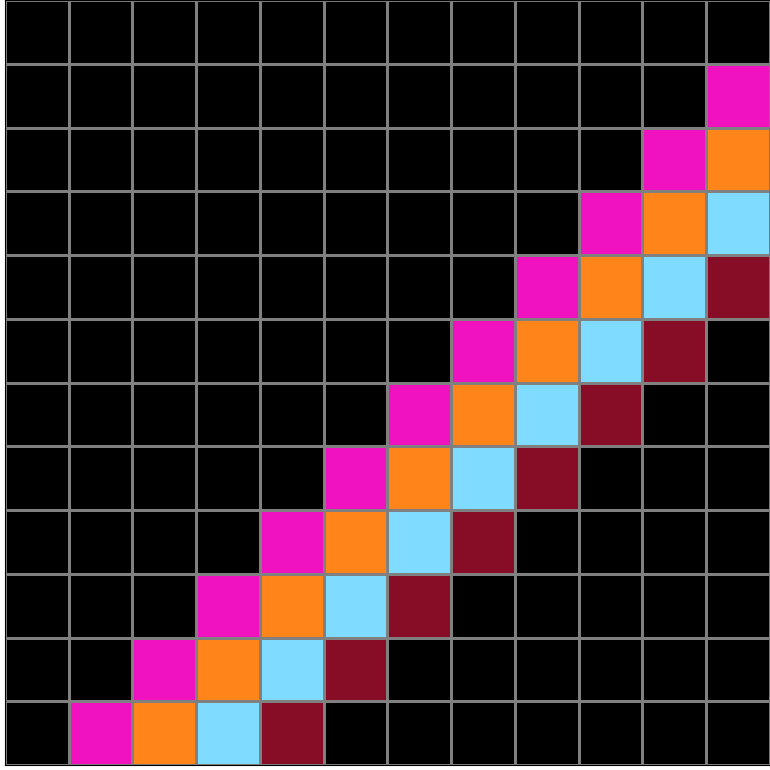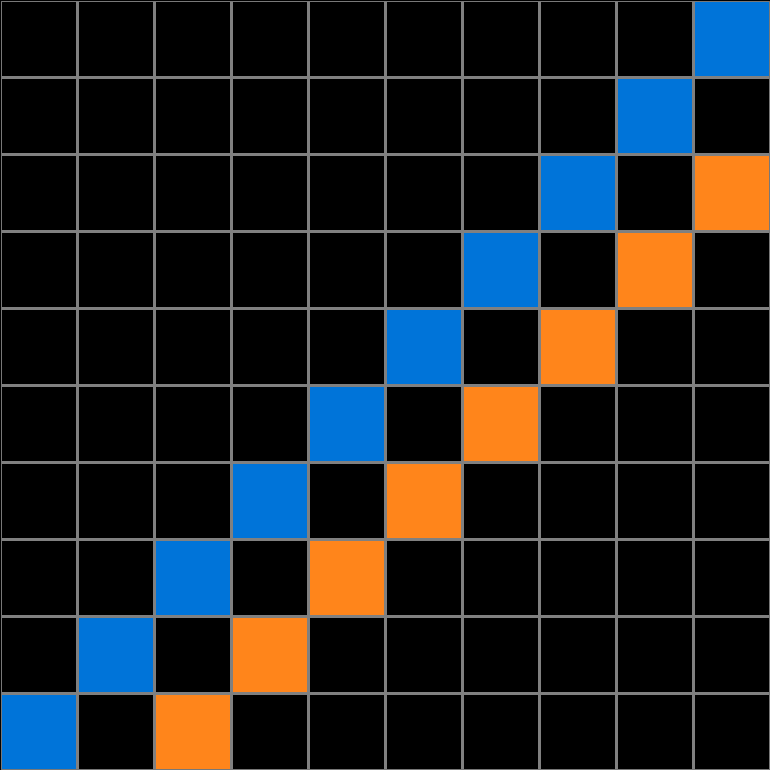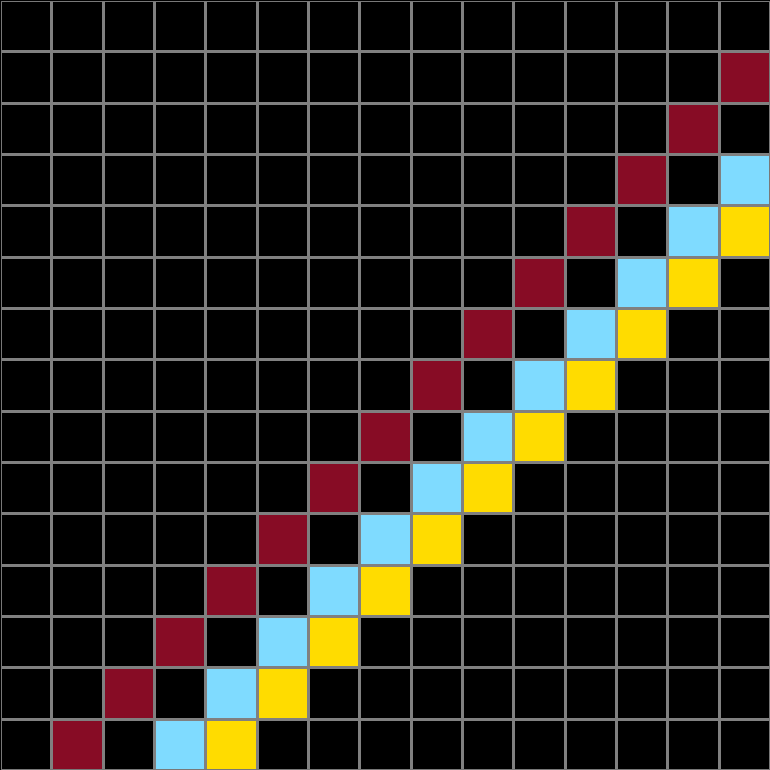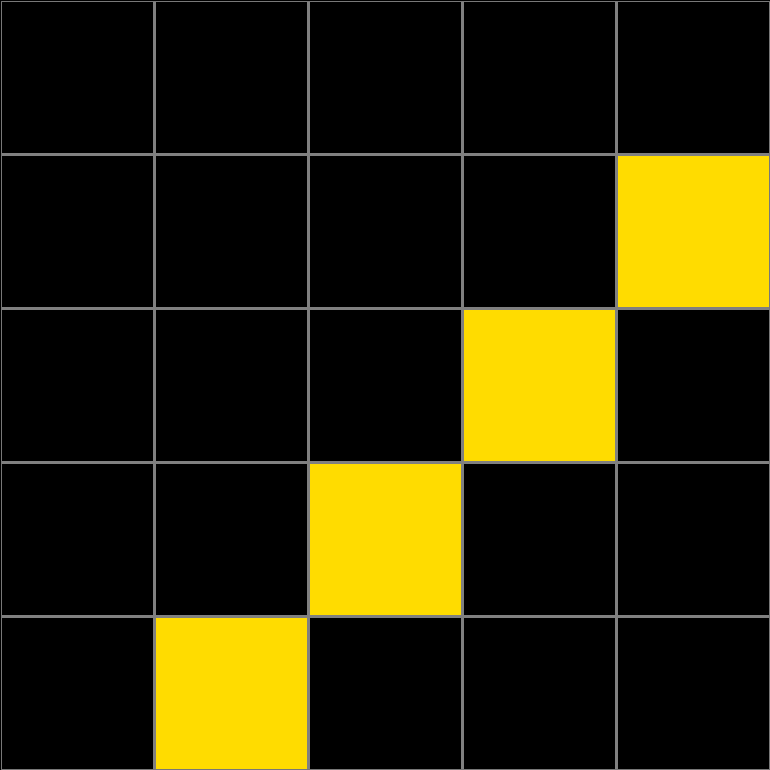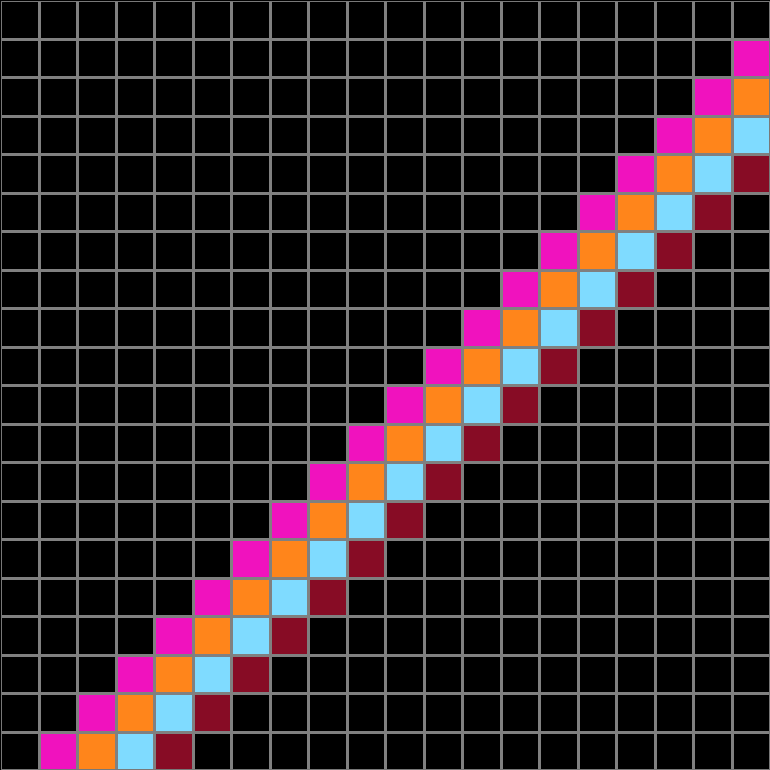Participant 1
Initial description: The first color in the strip becomes the diagonal of a square.
Final description: The first color of the strip becomes the diagonal of a square. The following colors follow suit.
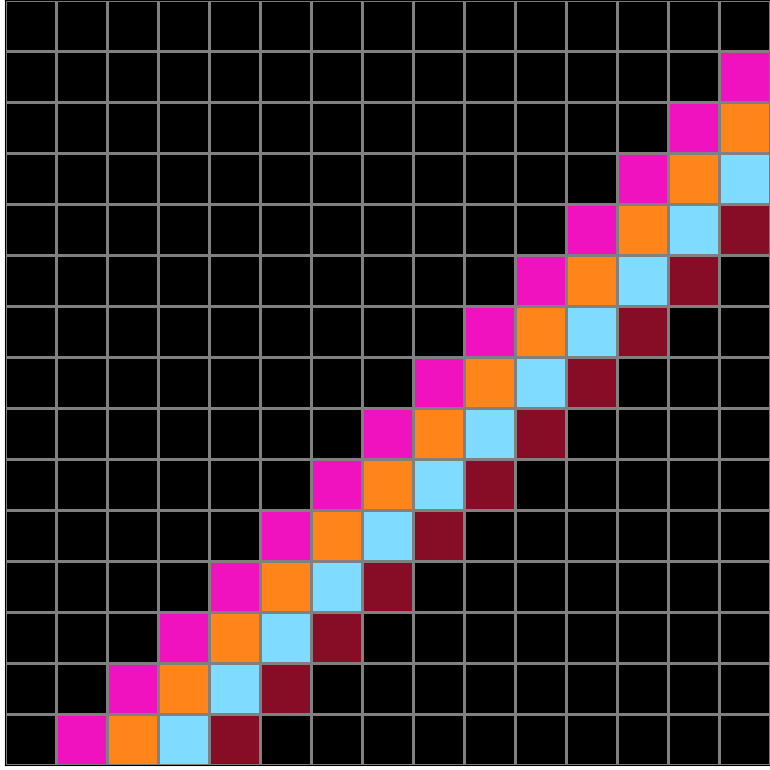
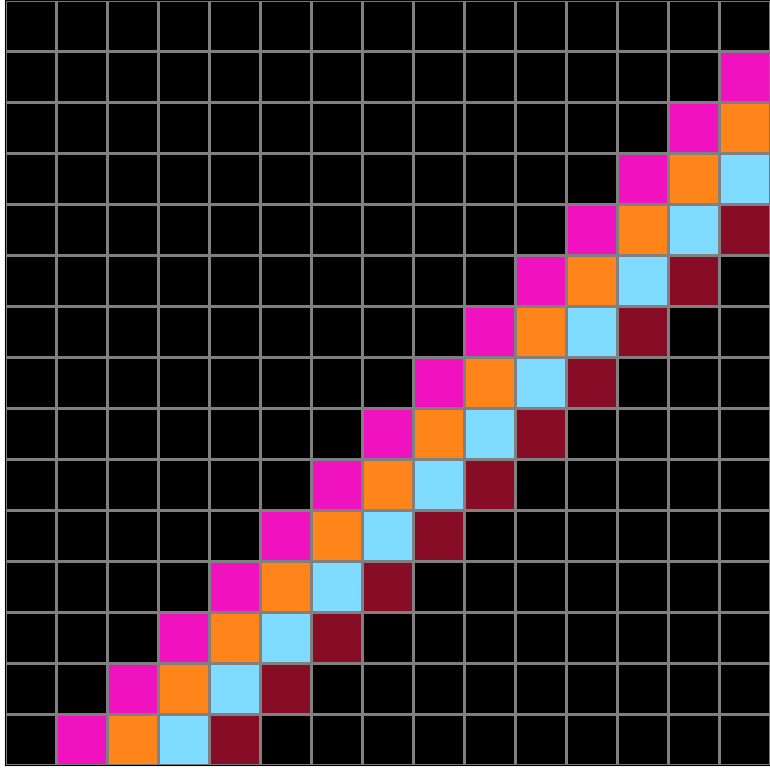
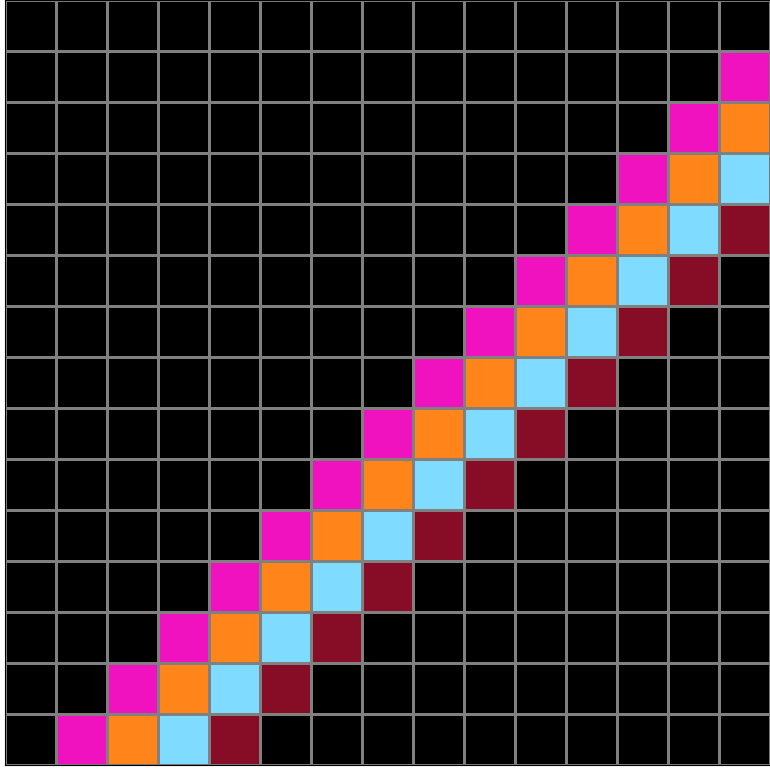
Participant 2
Initial description: The test input is rotated 90 degrees clockwise. It then makes up the first five squares in the rightmost column. Then the pattern is repeated on the adjacent left but shifted one square down. This is repeated until there are no more colored squares.
Final description: To figure out the size of the grid, add up the number of colors and multiply that times 5. Rotate the Input by 90 degrees to the right. That is the pattern of the first 5 squares on the rightmost column. Repeat the pattern to the column to the left of it but shift it down one square. Repeat until the end of the grid.
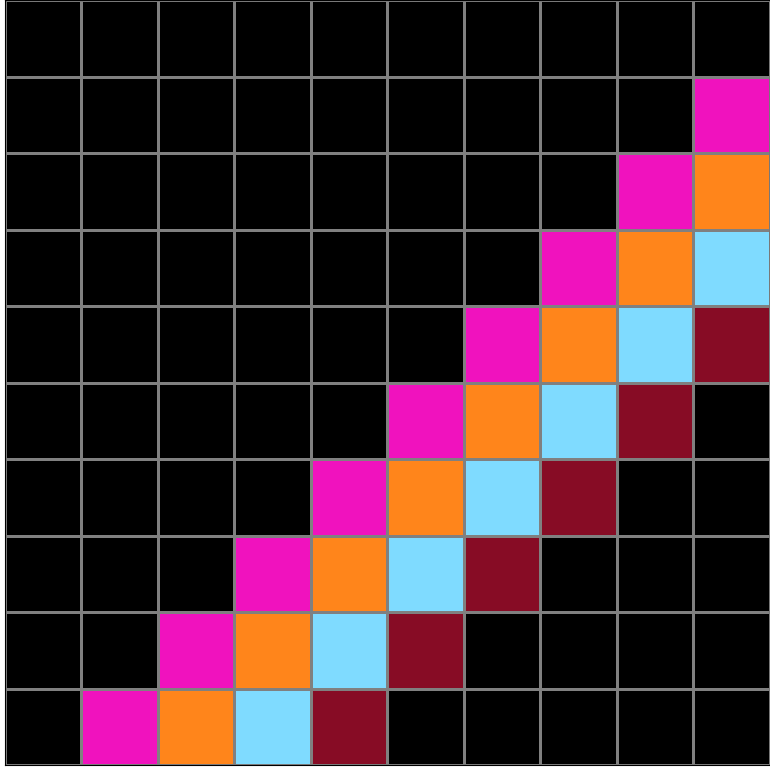

Participant 3
Initial description: I used 15x 15 grid since there were four input colors. Each color is placed diagonally in the order that they were presented.
Final description: There were four colors, so I made the grid 20x20, five for each color.
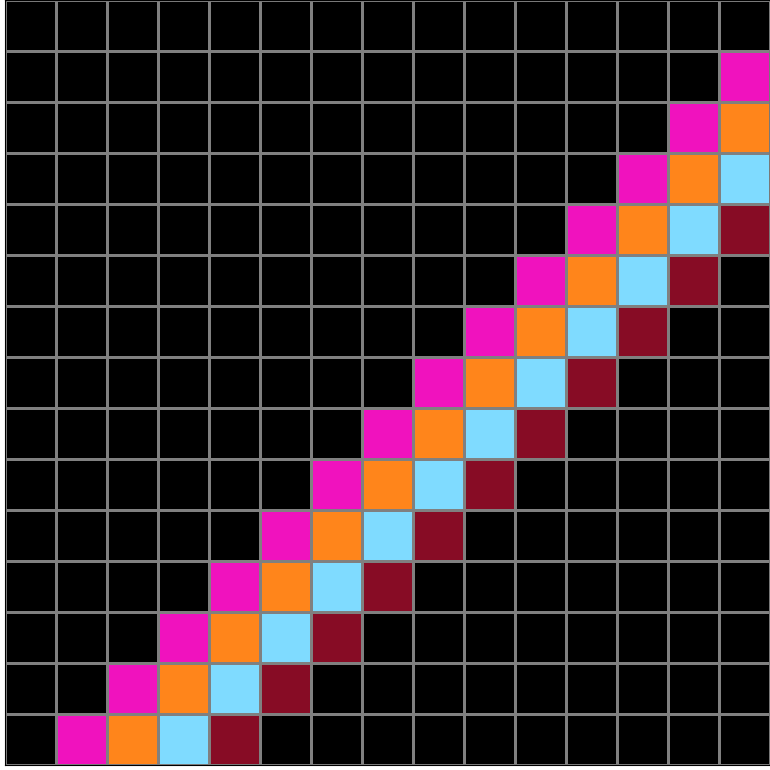

Participant 4
Initial description: multiply each colored test input square by 5 and use the total to determine the number of grids to create for both horizontal and vertical grid. Then, arrange the colors of the input diagonally across the grid starting from the bottom.
Final description: multiply each colored test input square by 5 and use the total to determine the number of grids to create for both horizontal and vertical grid. Then, arrange the colors of the input diagonally across the grid starting from the bottom.

Participant 5
Initial description: The colored lined ascend diagonally upward left to right and follow the same pattern they are preset in. The grid is five squares for each different color.
Final description: The colored lined ascend diagonally upward left to right and follow the same pattern they are preset in. The grid is five squares for each different color.
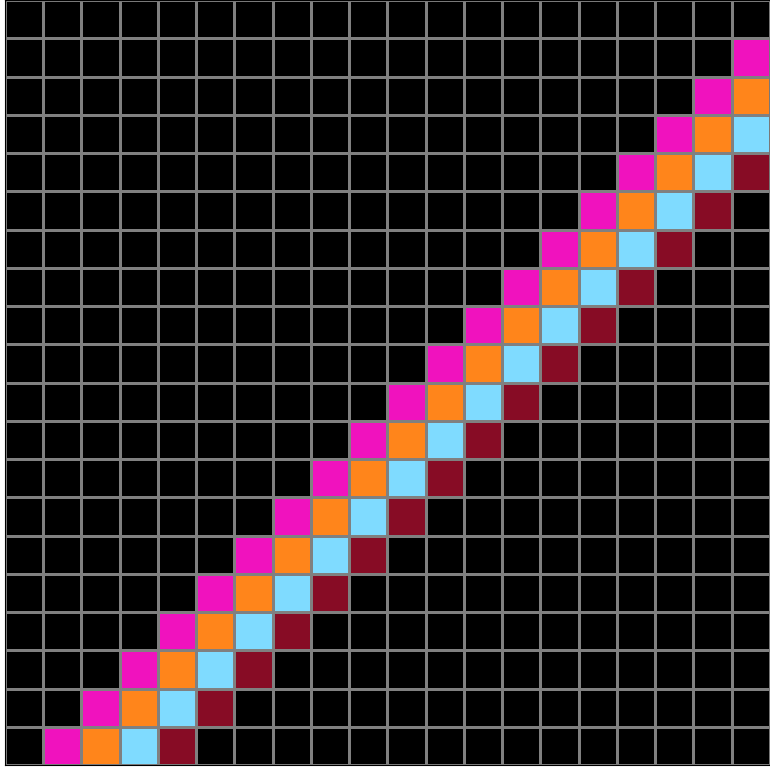
Participant 6
Initial description: make the 5X the number of colors other than black. Start the colors in inverse diagonal from right to left starting from the right corner and continue down filling all the way to the opposite corner.
Final description: make the 5X the number of colors other than black. Start the colors in inverse diagonal from right to left starting from the right corner and continue down filling all the way to the opposite corner.
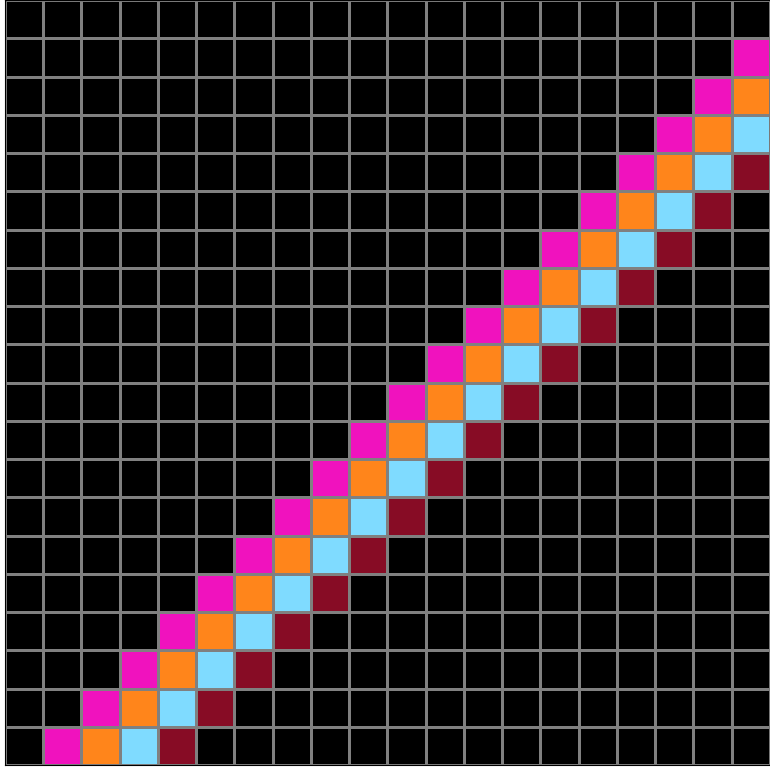
Participant 7
Initial description: I looked at the squares and the color and what order the squares were displayed. I then used that to make the line of squares where the colors on the input are. Then I made diagonal lines for each square
Final description: I checked the number of squares with colors and that determined the grid size which was made when one color square was 5x5 which made this 20x20 for 4 squares with color but it did not include black squares and then I made a diagonal line for each square that had color
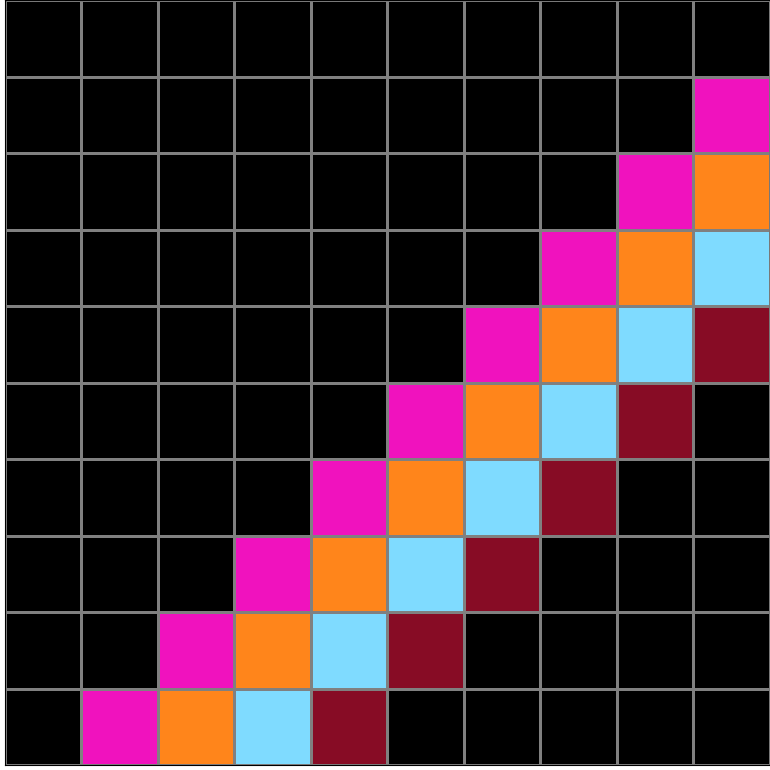

Participant 8
Initial description: To extend the color pattern diagonally to the edge
Final description: Make grid size using 5 squares for every non-black color. Then, extend the pattern, beginning at the lower left, to the edge of the top right of the grid.


Participant 9
Initial description: its interesting one.
Final description: very difficult task



Participant 10
Initial description: different colours.
Final description: Each input is transformed by a machine that applies a hidden rule to produce a corresponding output.

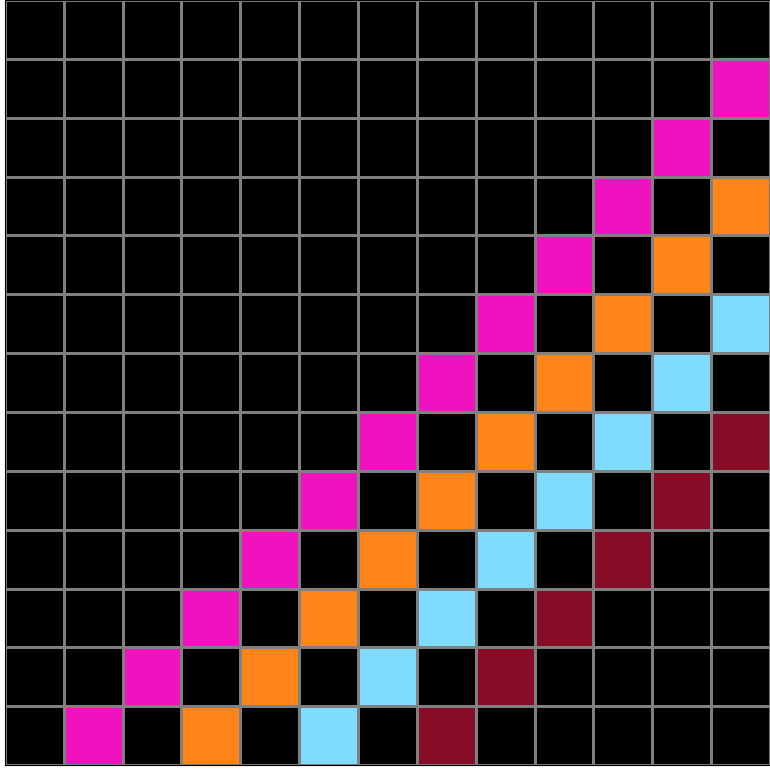
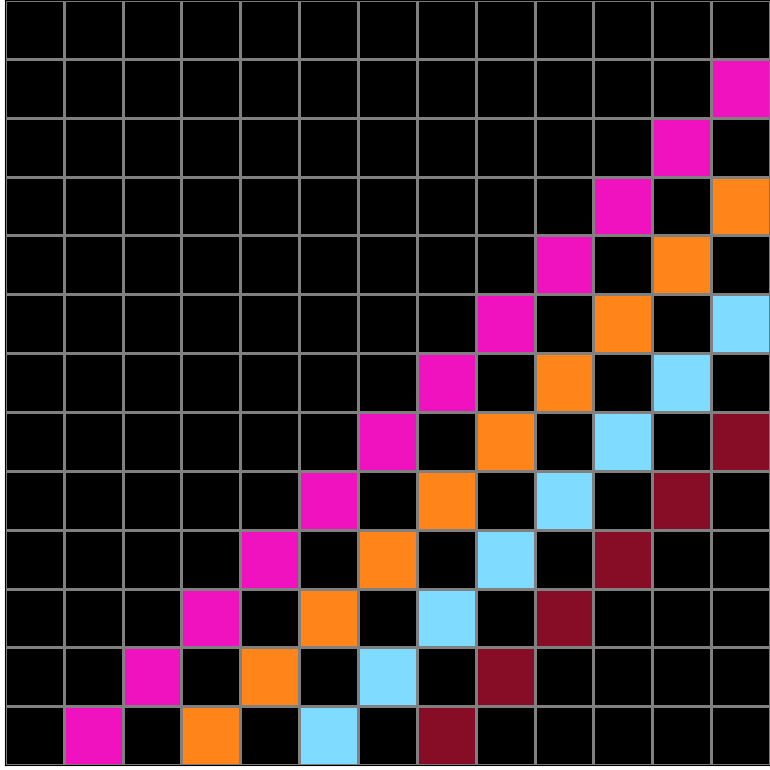
Participant 11
Initial description: A diagnose line is created in the same color as the sample starting from the right the same number of boxes down.
Final description: For every color the grid grows by 5 squares. The colors start on the right side counting down from the top and continue diagonally to the bottom left.
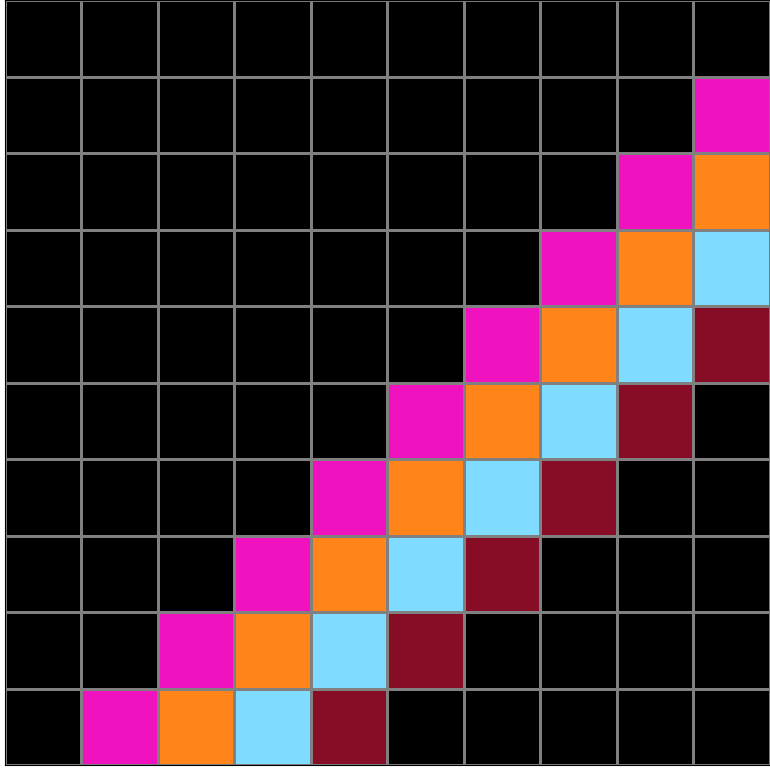
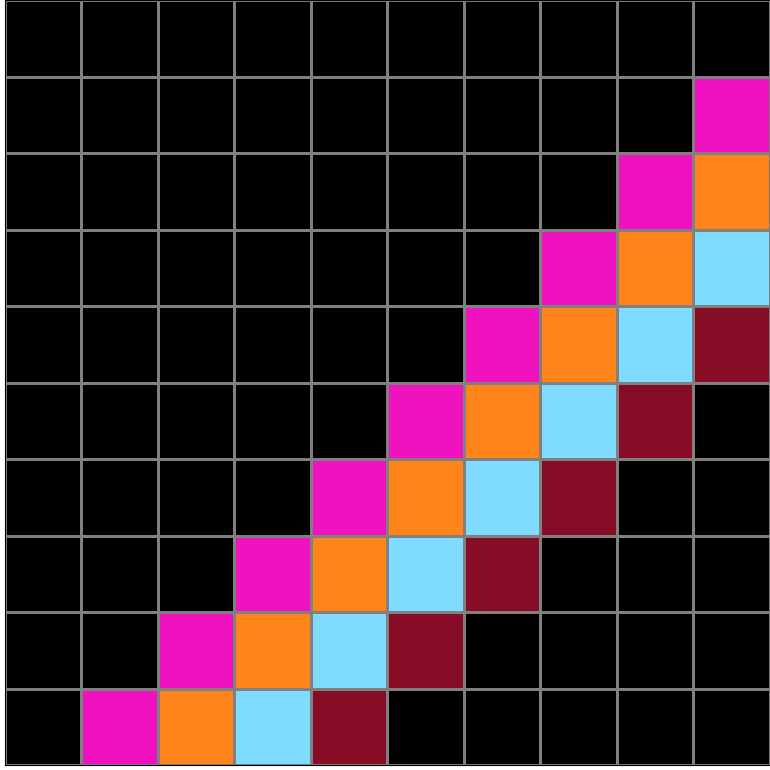

Participant 12
Initial description: I know you have to draw diagonal lines according to their original order. I don't really know how to determine the length of the square, though.
Final description: I do not know how to solve for the length of the lines/the overall square. I had to give up, I had no clue at all.
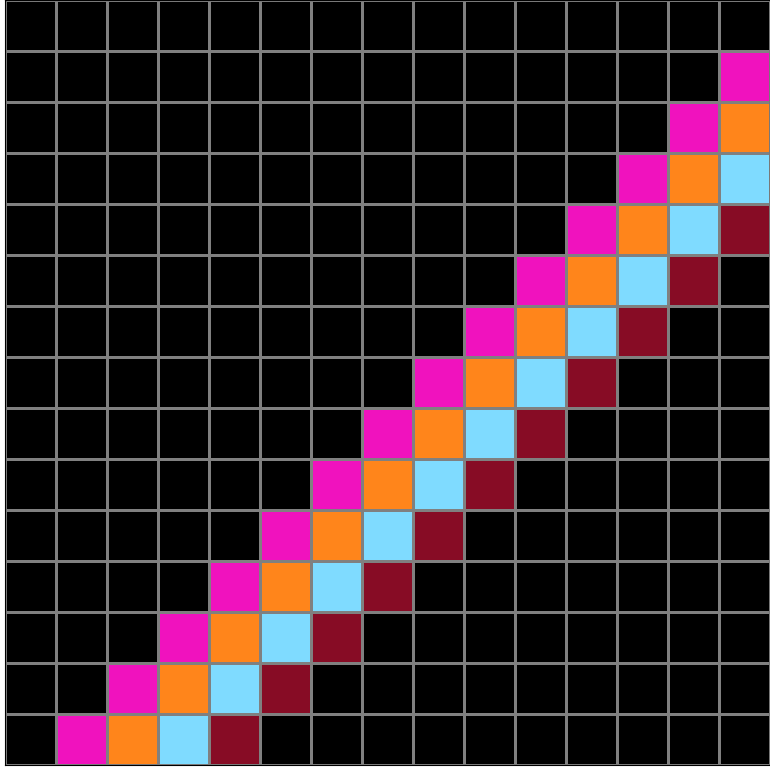
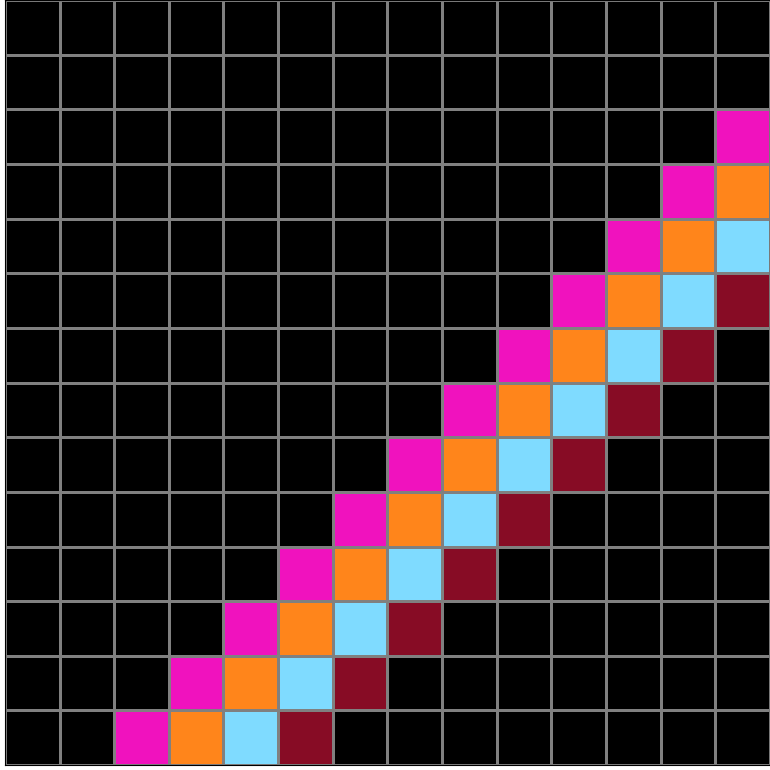
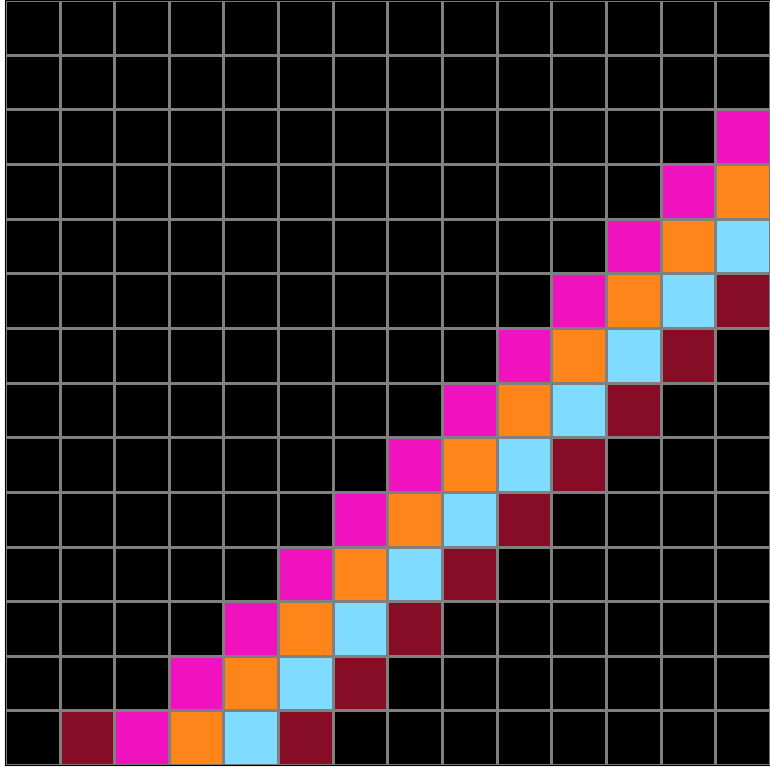
Participant 13
Initial description: The order of the input determines the diaganol line of the output
Final description: The rule was to use the input to make diagonal lines but I could not figure out what grid size.
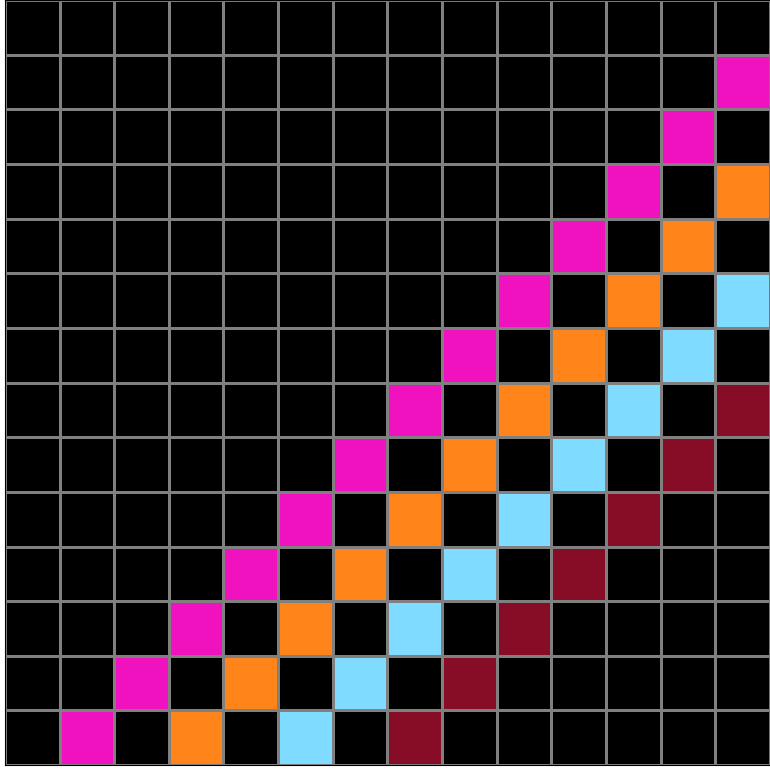
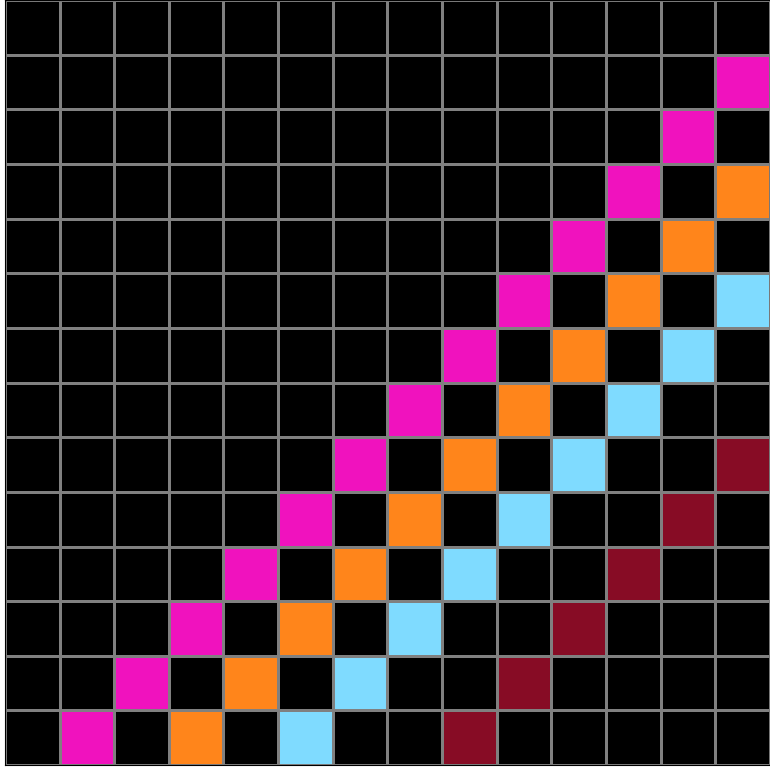
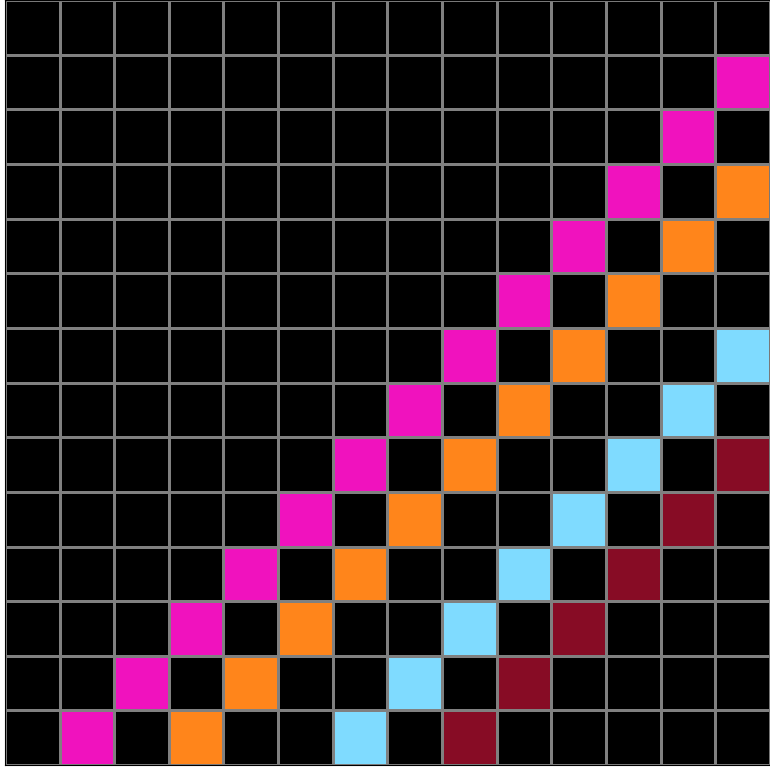
Participant 14
Initial description: each row is depicted with a horizontal line in the output, each color represents a 5 grid increase
Final description: I was on the right path but made in error in the grid size for each color
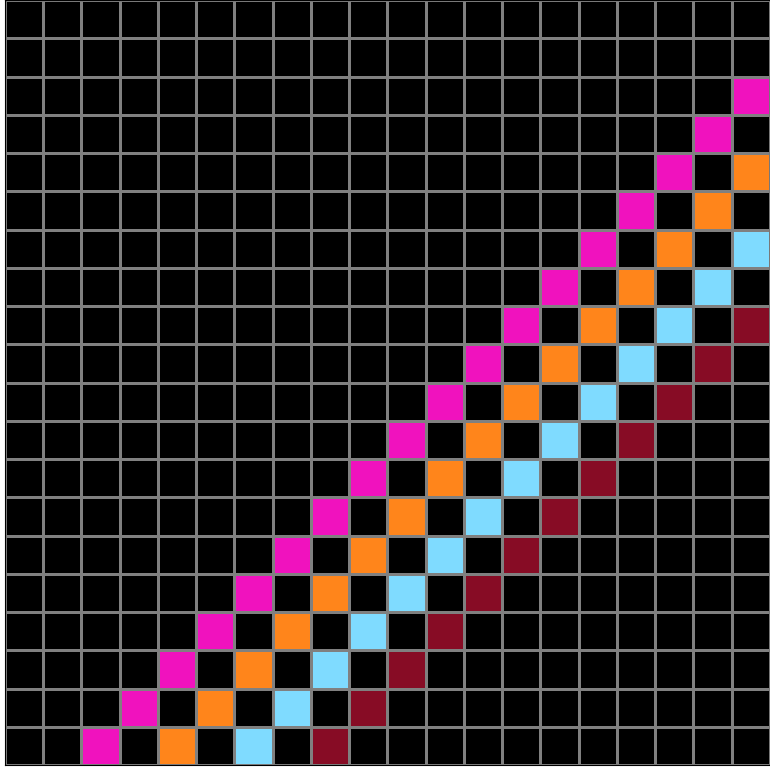
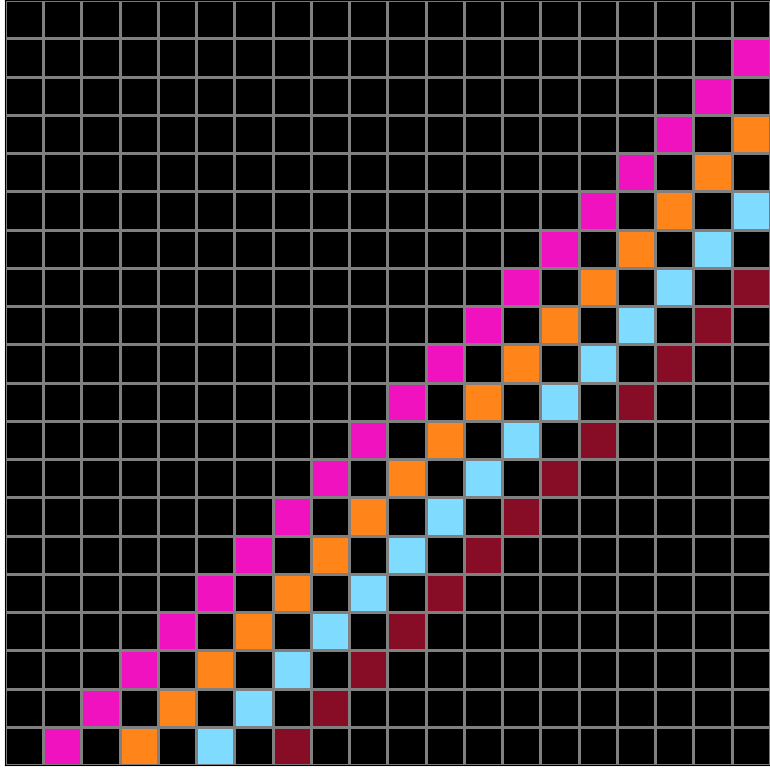
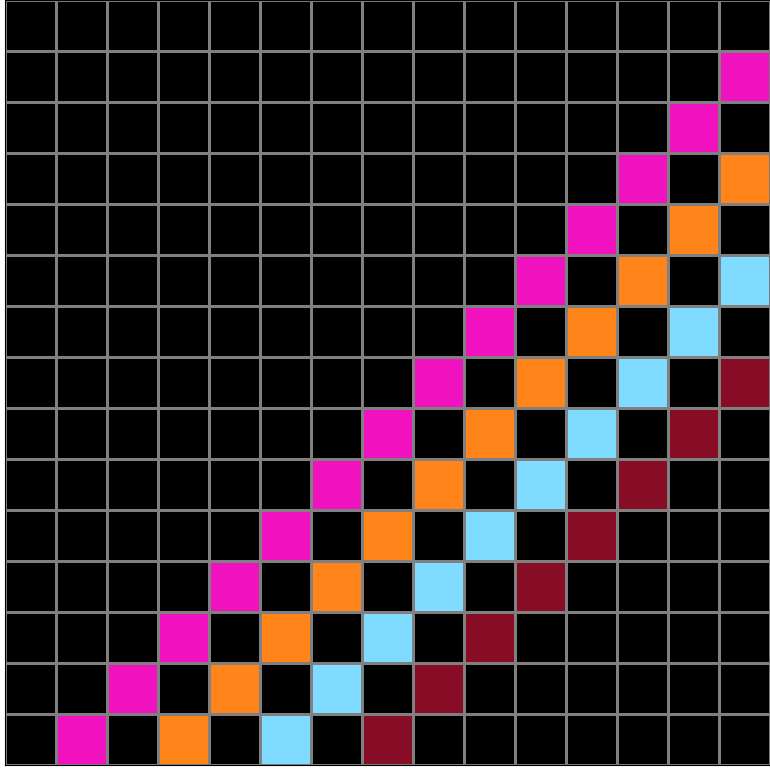
Participant 15
Initial description: I need to create an angle design for each color starting from the left side. I follow the number of grids from example inputs 3 and 4.
Final description: I think I got it correct. I need to have the angle design of the test input color, starting from left to right, it will goes down to the bottom until it matches the final color.
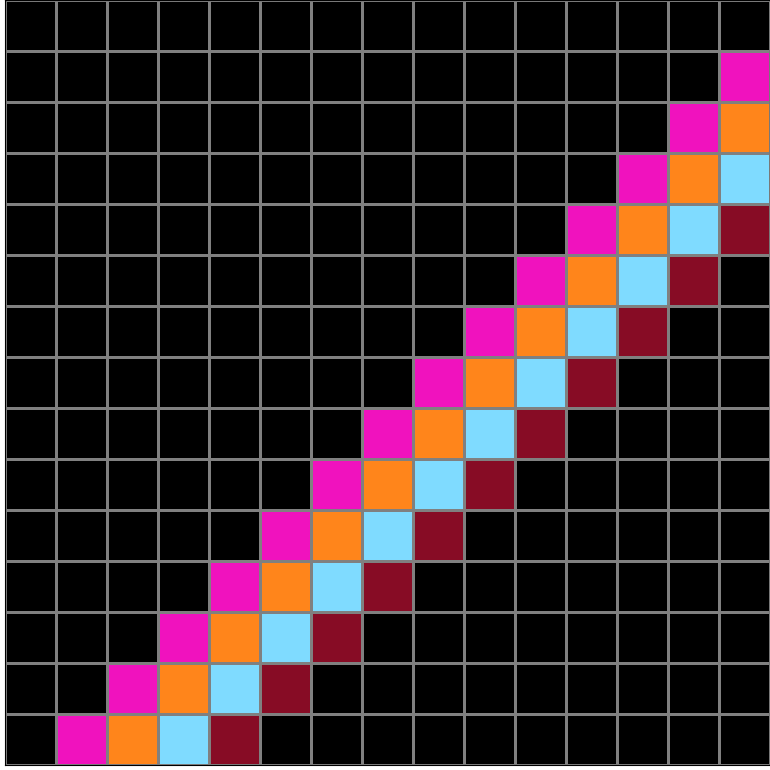
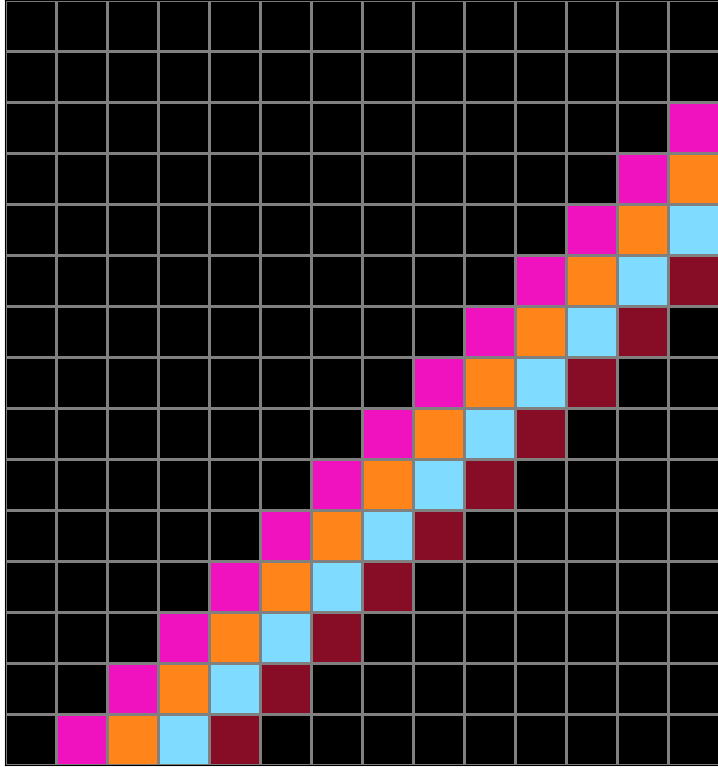
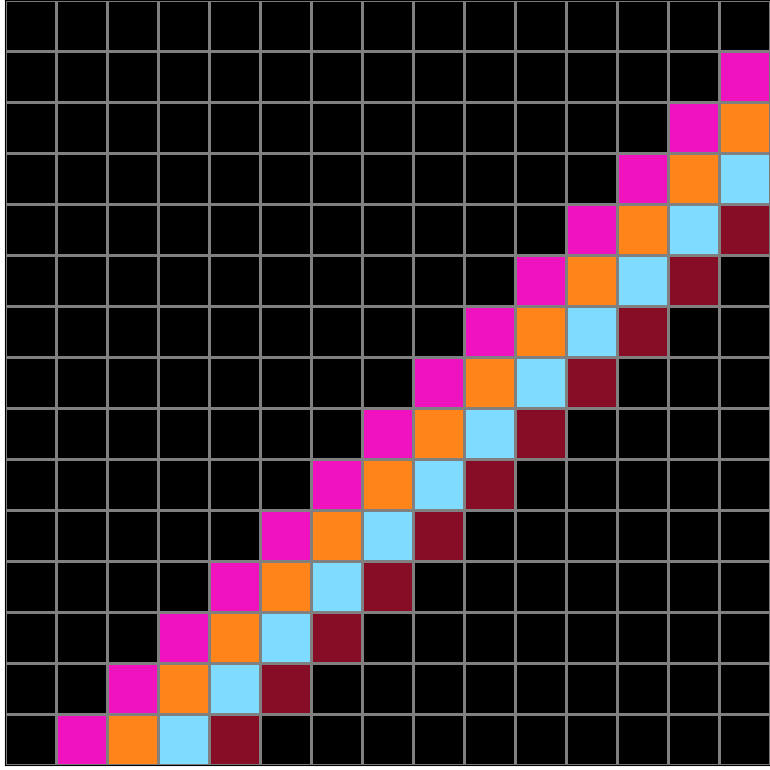
Participant 16
Initial description: For the grid size you needed to take how many colors besides black appeared in input and then times that by 5. If 4 colors appeared it would be 4 times 5 so your grid size would be 20 by 20. if 2 colors appeared then it would be 10 by 10. You needed to copy how the colors appeared in the test input starting at the bottom left corner. You then had to ladder the colors up until they touched the right side.
Final description: For the grid size you needed to take how many colors besides black appeared in input and then times that by 5. If 4 colors appeared it would be 4 times 5 so your grid size would be 20 by 20. if 2 colors appeared then it would be 10 by 10. You needed to copy how the colors appeared in the test input starting at the bottom left corner. You then had to ladder the colors up until they touched the right side.
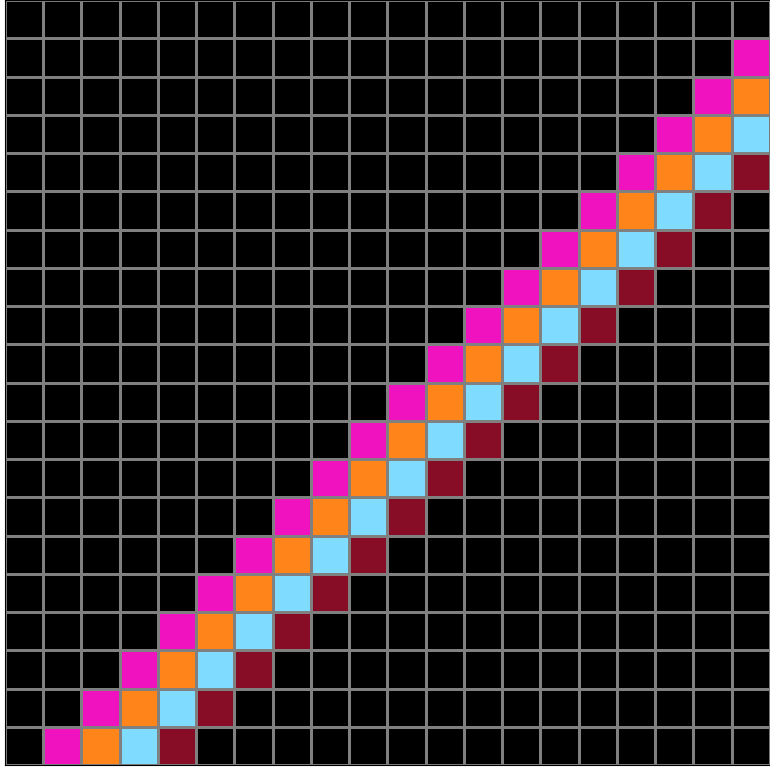
Participant 17
Initial description: I assumed that rule was diagonal strips of each of the test input colors in order. The first color spans diagonally from upper-rightmost square to the lower-leftmost square. Then, the other colors follow to the right of the first diagonal strip.
Final description: At first I thought I just had to do a 15x15 grid and span the colors diagonally, but after getting the first attempt wrong, I realized that I had to adjust the size of the grid based on the number of colors. I thought the grid size was the number of DIFFERENT colors multiplied by 5. So, 1 color would result in a 5x5 grid, 2 colors would result in a 10x10 grid, and so on. That seemed to ring true for all of the example outputs, so I'm not sure what I did wrong.

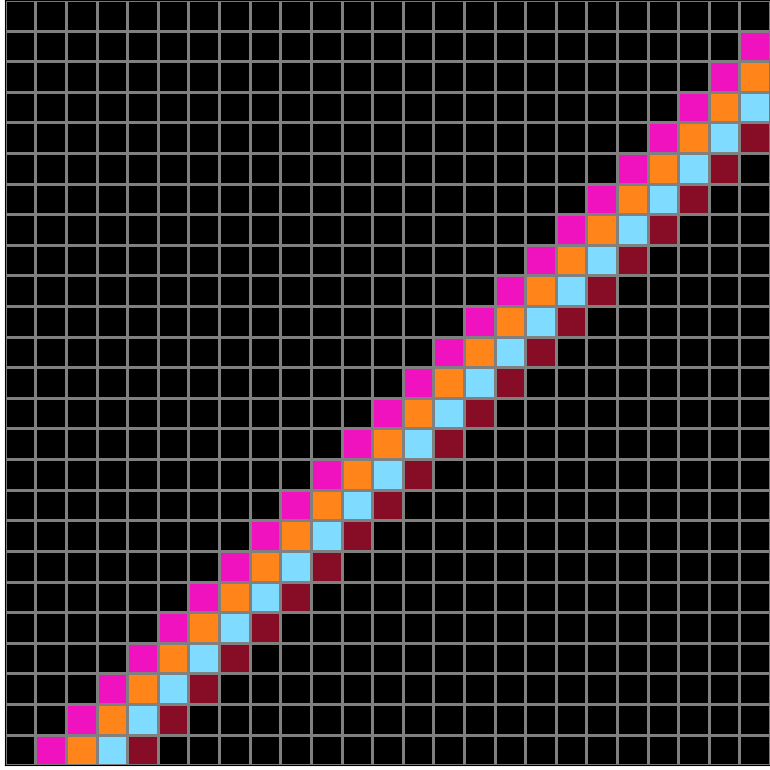
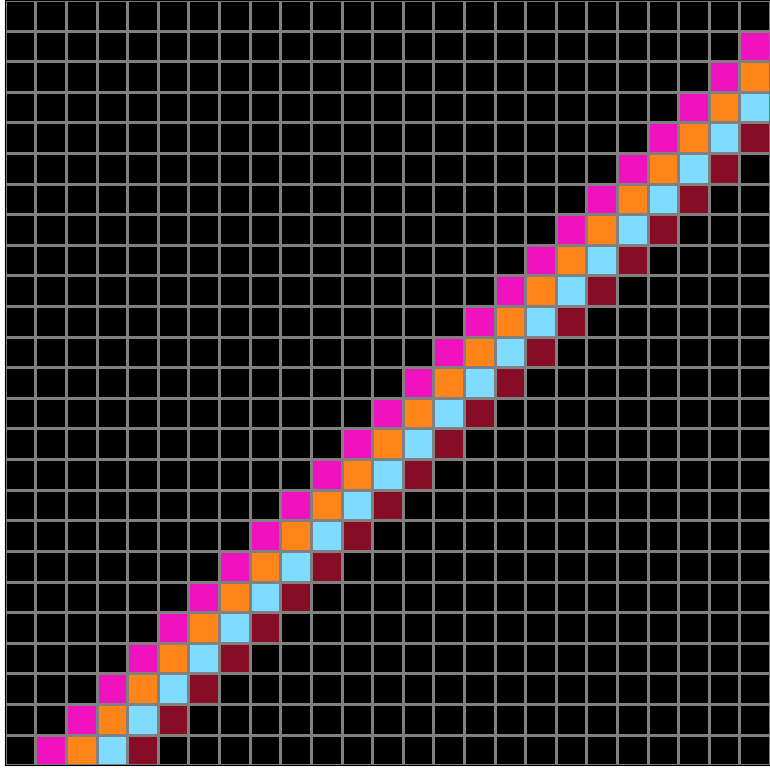
Participant 18
Initial description: move the pattern horizontally starting from bottom left
Final description: The pattern was discernible but the number of grids undeterminable
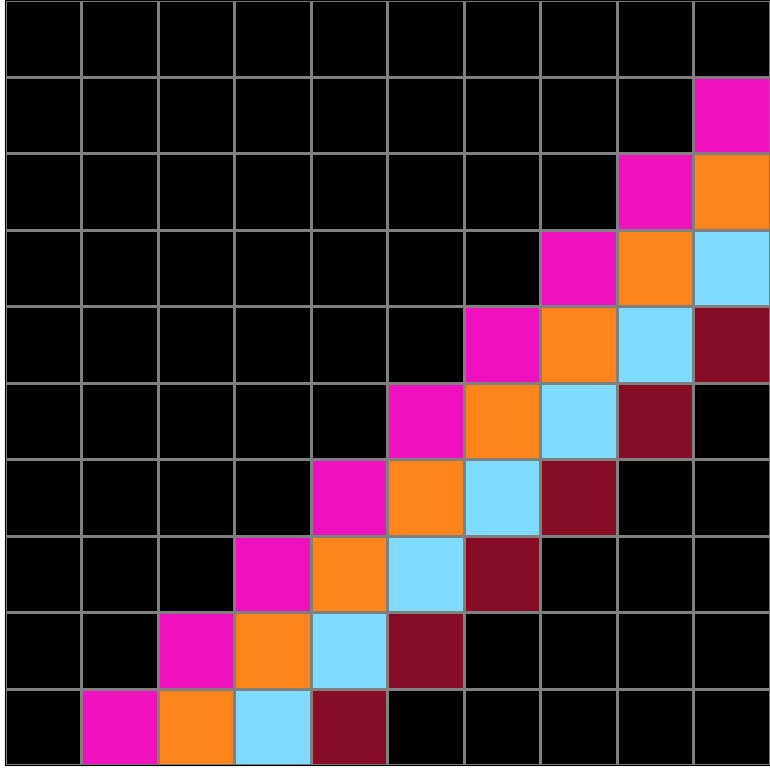
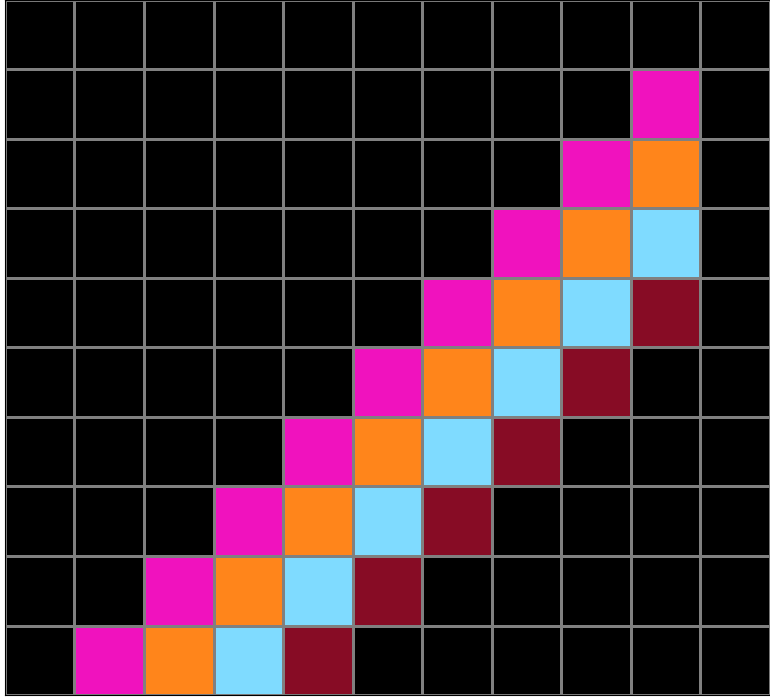
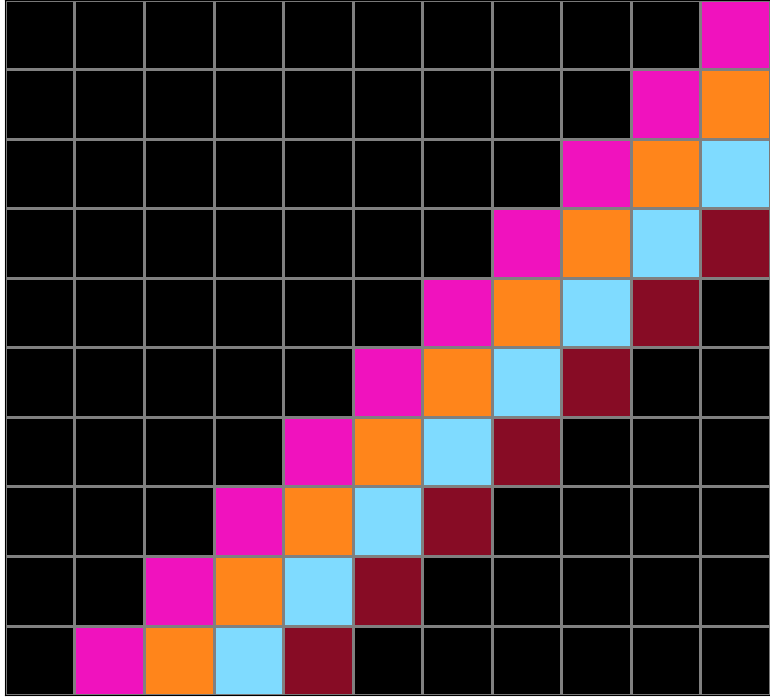
Participant 19
Initial description: It increased the grid by 5 every color included and it started from the top space 1 equals the top right, and going down from there each color left to right in the input equals top to bottom in the output.
Final description: It increased the grid by 5 every color included and it started from the top space 1 equals the top right, and going down from there each color left to right in the input equals top to bottom in the output.

Participant 20
Initial description: excellent
Final description: excellent



Participant 21
Initial description: followed the colors patterns starting with black and then orange. No block remaining for blue and burgundy.
Final description: chose what I thought was the answer.
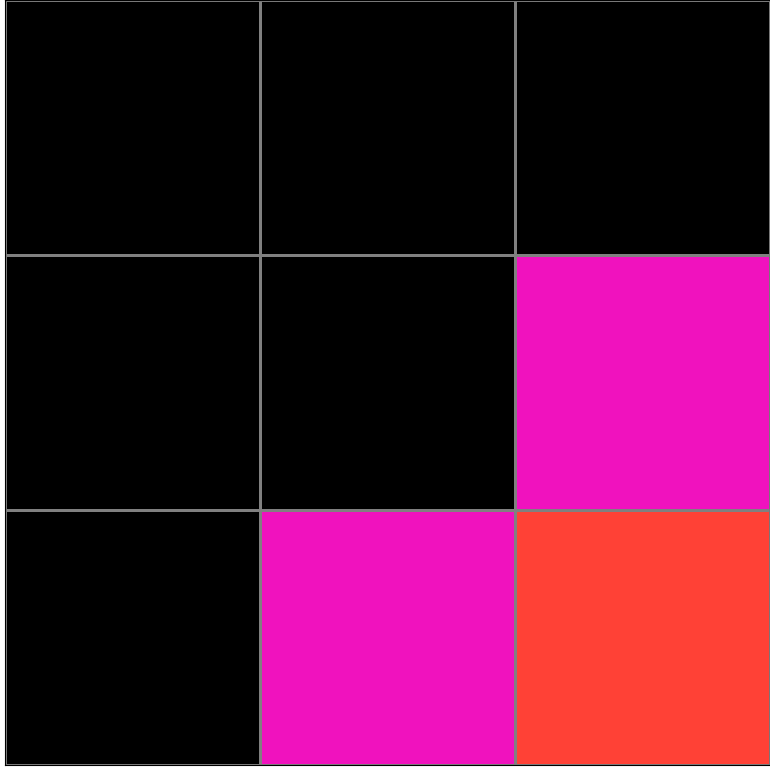

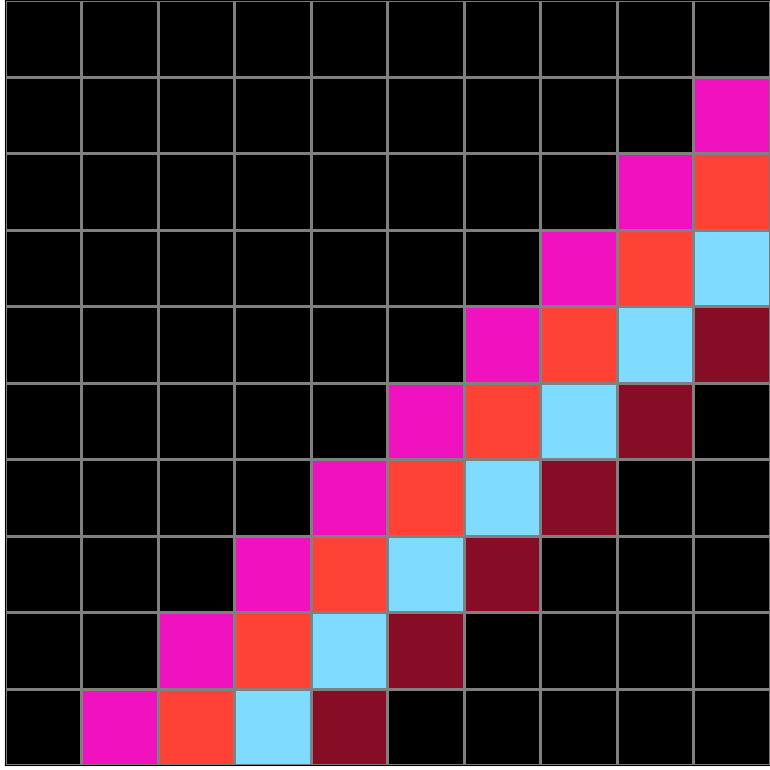
Participant 22
Initial description: Grid system helps a lot.
Final description: Difficult one

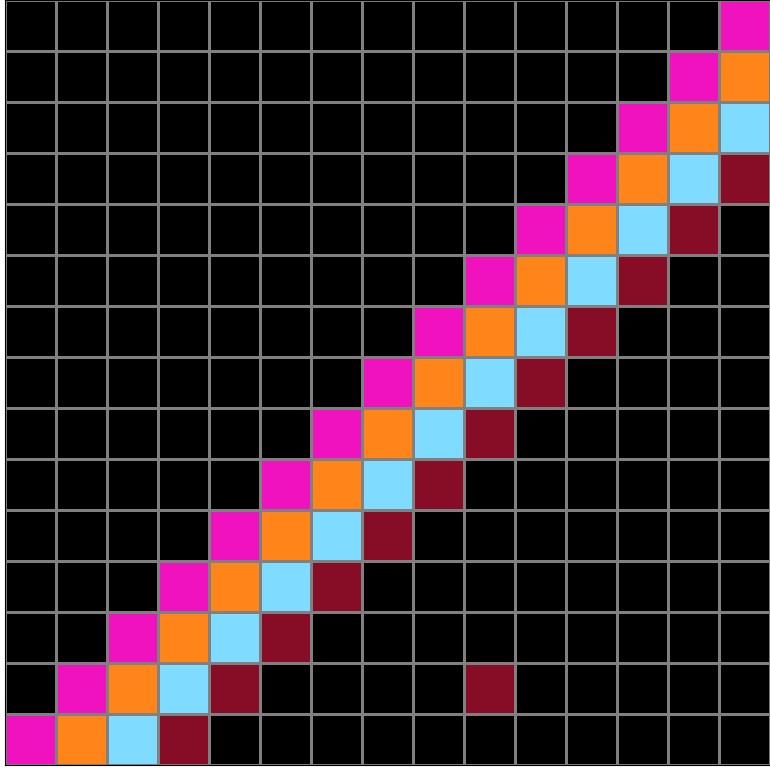
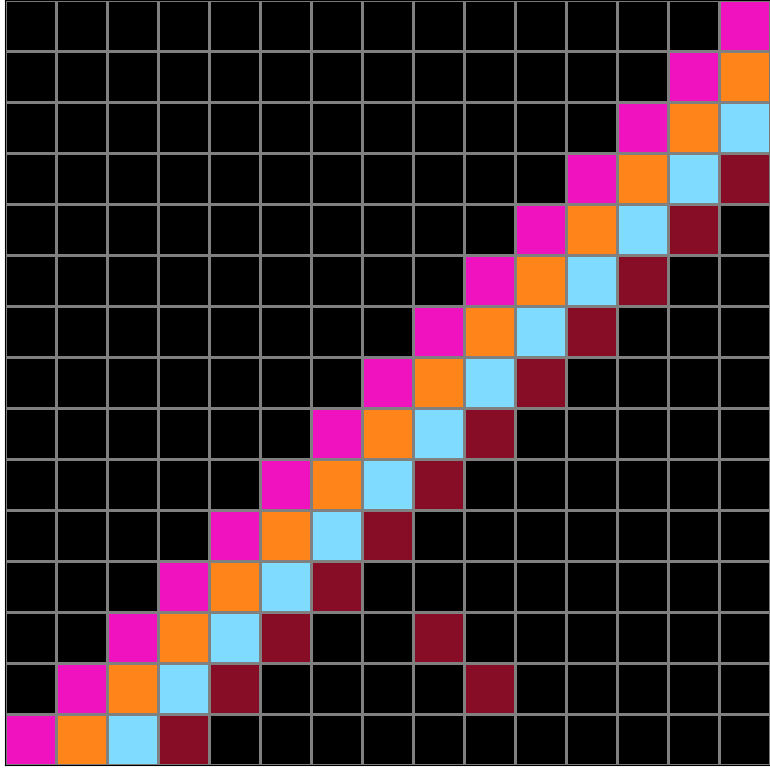
Participant 23
Initial description: I thought the rule was to create diagonal lines from the colors in the input, plus make the output a square size of 5 * (# of colors that aren't black in the input).
Final description: I thought the rule was to create diagonal lines from the colors in the input, plus make the output a square size of 5 * (# of colors that aren't black in the input).

Participant 24
Initial description: The grid size changed based on the number of colors (not including black). Each color is worth 5 cells. The pattern then stars on the bottom left corner and extends to the upper right, diagonally.
Final description: The grid size changed based on the number of colors (not including black). Each color is worth 5 cells. The pattern then stars on the bottom left corner and extends to the upper right, diagonally.

Participant 25
Initial description: Just the input pattern going out from the first cell on the bottom row, then repeating one row up but one column to the right over and over. No idea how the size of the output grid is determined though, just randomly hit 15x15.
Final description: Same rule I initially described, just not sure how the grid size is determined.

